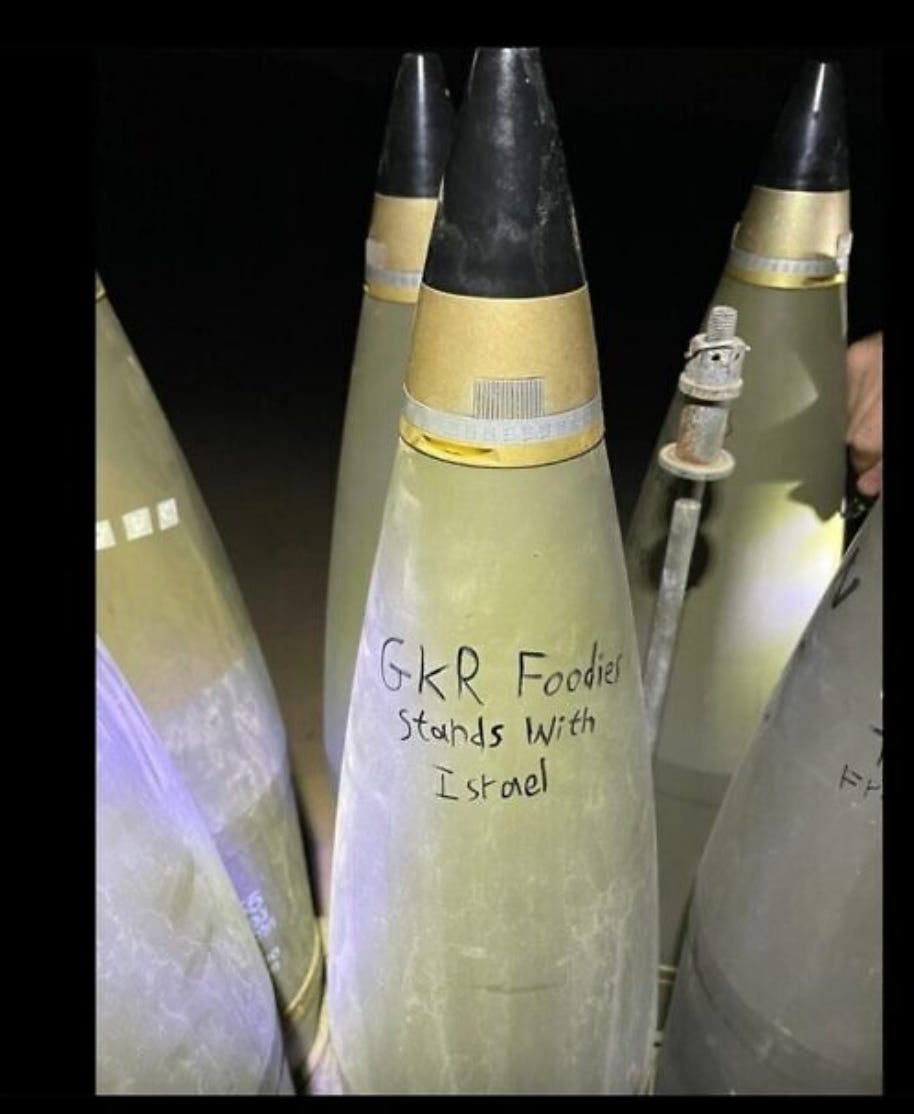Weapons of the Week #2: Why Can't the US Make More Artillery Shells?
What can the shortage of 155 mm shells tells us about the future of American capitalism? Plus: Ukraine's Patriot game, economists with guns, and more.
[Note to readers: This the second installment of Weapons of the Week, a regular roundup newsletter covering the military-industrial complex and the politics of militarism. This newsletter goes exclusively to paid subscribers of this Substack. As an introductory special, I’m offering a permanent 20% discount off the sticker price of a paid subscription. The “permanent” part means that if you subscribe now, you will lock in the intro price for as long as you subscribe. This offer expires on June 1.]
“This is a war relating to munitions” (Joe Biden, July 2023)
The big weapons news this week was the Biden administration’s much-publicized “pause” on the shipment of certain weapons to Israel. It remains an open question what effect this will have on domestic politics or on the ongoing attack on Rafah. There will be more to say on that, perhaps in one of the next installments of Weapons of the Week. The body of this newsletter takes as its starting point a detail of the pause which I haven’t seen anyone flag. The shipment which has been actually been paused reportedly contained 1,800 2,000-pound bombs and 1,700 500-pound bombs. Biden has also threatened to withhold, under certain conditions, other “weapons and artillery shells.” As far as I can tell, no actual artillery shells have been withheld, but there are reports that Israel has been running low on ordnance, particularly of the 155 mm shells which have been in short supply the world over. The shortage was obvious when, early in the Gaza War, shells which had been bound for Ukraine were rerouted to Israel. I’ve been wondering for months why it’s so hard to increase production of these basic implements of war; much of this post gathers up what I’ve been able to figure out.
Is there any connection between the threat to withhold artillery shells and the widely reported fact that 155 mm shells are already physically scarce? On at least one occasion, Biden has cited this specific shortage as the cause of a substantive policy change, namely when he linked the “difficult decision” decision to send cluster bombs to Ukraine to the reality that “they’re running out of that [155 mm] ammunition, and we’re low on it.” Continued Biden: “And so, what I finally did…not permanently – but to allow for this transition period, while we get more 155 weapons [was to send] these [cluster] shells, for the Ukrainians.” I have seen no evidence that the new “pause” is a rationalization of a production shortage, but it would be interesting to know.
In a recent post at the Law and Political Economy blog, Darryl Li has some fascinating details on the 155 mm shell shortage:
To bridge the shortfall, the United States has taken to scouring the world for munitions, brokering a series of indirect transfers from countries wary of being seen as taking sides in the conflict [including South Korea and Pakistan]…
This months long shooting spree [against Gaza] has forced Israel to join the global scramble for 155mm shells from wherever they can be sourced, competing directly with Ukraine. Complaints of outdated and substandard munitions have made their way into the Israeli media, including reports of U.S. shells produced during the war in Korea – nearly as old as the state of Israel itself. It is as if Gaza’s refusal to submit to the might of the arsenals of the Western world is forcing Israel to travel back in time for even more firepower.
As Li explains, the 155 mm shell is notable for the fact that it is unrepresentative of contemporary American capitalism:
Keep reading with a 7-day free trial
Subscribe to Origins of Our Time to keep reading this post and get 7 days of free access to the full post archives.

